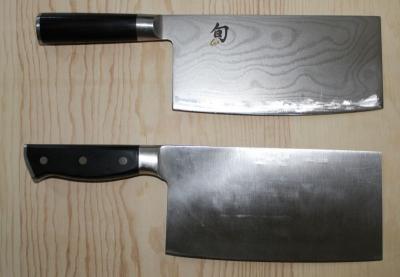- Joined
- Jun 5, 2006
- Messages
- 88
This is incredibly helpful! Thank you!
The BladeForums.com 2024 Traditional Knife is available! Price is $250 ea (shipped within CONUS).
Order here: https://www.bladeforums.com/help/2024-traditional/
I'm going to... finish with bare leather.
and it's very easy to dub and dull a good edge with any leather.
....
at the end of the stroke just stop - stop and pull the blade up and off the leather.
If you pull the blade off of the leather at the end of the stroke in an arc, which is a very normal thing to do, you will have undone all of your work.
Once the edge bites pull back with light pressure and at the end of the stroke just stop - stop and pull the blade up and off the leather.
If you pull the blade off of the leather at the end of the stroke in an arc, which is a very normal thing to do, you will have undone all of your work.
Keith
Can someone please further explain the below portion of Keith's post? I am new to knife sharpening and I cannot picture in my head what exactly he is referring to here. Do you not need to arc the stroke in order to get to the point of the blade?
Even with great exercise in art & discipline of stropping, convexing is almost guarantee...
For mere mortals - edge can only be strop so many times before it's too convex - which effectively dull for cutting stiff/wedgy materials. When cross slice newsprint and it steered right (for right hander, opposite for left hander), then the edge is too convexed. The side of the paper holds by hand is effectively more stiff than the cut-off/wedged side, therefore it will steer away. Time to sharpen or hone the edge.
Is it possible to repeat strops and preserve sub-micron edge (for non hollow grind blade) at consistent/repeatable angle +- 5 degrees? Alternative freehand methods?

You can greatly minimize the risk of 'over-convexing' on a strop, simply by stropping on a firmer substrate. Reduce the thickness or softness of leather, or use wood (anything from balsa to hardwoods), or even strop on varying thicknesses of stacked paper over a hard backing. The less 'give' there is in the stropping substrate, the less likely the edge will get rounded off. More often than not, most of the issues I've had with over-stropping have resulted in removing too much of the the 'toothy' bite of the edge, and less to do with excessively rounding or convexing it.
As with all sharpening, good technique trumps all. Low angle and very light pressure will also minimize the chances of rounding off an edge on a strop. If and when the edge does become a little too dull, one can simply 'strop' the edge on some more abrasive material (sandpaper), and the edge can be restored that way. That's how I usually do it.
When used with compound, virtually any material on a smooth, flat surface can be used with great effectiveness. I have no doubt the tape could work. Each and every substrate will produce different results with a given compound, due to differences in softness, texture and how the compound embeds itself in the material. This is a great thing, because it gives you an almost infinite number of ways to fine-tune your stropping to your blades. Different steels will respond in their own unique ways to a given stropping 'recipe' (compound + substrate + pressure + angle + speed of stroke + etc...). There's never any excuse to stop experimenting with something new.
The reason I am asking is because I use DMT Diafold hones with my Lansky clamp, and I realized that there is quite a big jump between my EF (9 micron) hone and my EEF (3 micron) hone, and nothing to fill the gap. I do have some 6 micron DMT paste, which it seems could technically be used on a strop after the EF hone before progressing to the EEF hone. Therefore, using the paper tape with compound in the manner described above would would allow me greater consistency and efficiency, as I would not need to remove my knife from the clamp to strop, could maintain a consistent angle, and could progress directly to the EEF hone afterward. Any thoughts?
When used with compound, virtually any material on a smooth, flat surface can be used with great effectiveness. I have no doubt the tape could work. Each and every substrate will produce different results with a given compound, due to differences in softness, texture and how the compound embeds itself in the material. This is a great thing, because it gives you an almost infinite number of ways to fine-tune your stropping to your blades. Different steels will respond in their own unique ways to a given stropping 'recipe' (compound + substrate + pressure + angle + speed of stroke + etc...). There's never any excuse to stop experimenting with something new.
